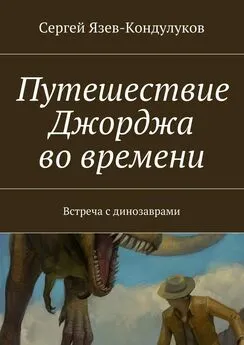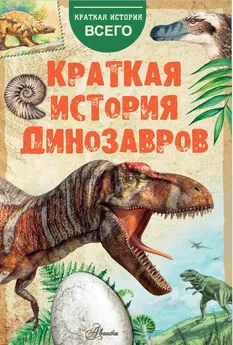Джордж Пойнар - Кто кусал динозавров?
- Название:Кто кусал динозавров?
- Автор:
- Жанр:
- Издательство:Princeton University Press
- Год:2007
- Город:Princeton, New Jersey
- ISBN:978-0-691-12431-5
- Рейтинг:
- Избранное:Добавить в избранное
-
Отзывы:
-
Ваша оценка:
Джордж Пойнар - Кто кусал динозавров? краткое содержание
В книге имеются чёрно-белые фотографии и рисунки. К сожалению, по причинам, не зависящим от переводчика книги, в ней отсутствуют упоминаемые в тексте многочисленные цветные вкладки. Может быть, когда-нибудь…
Кто кусал динозавров? - читать онлайн бесплатно полную версию (весь текст целиком)
Интервал:
Закладка:
232.Parola. P & Raoult, D. 2001. Tick-borne bacterial diseases emerging in Europe. Clinical and Microbiological Infections 7: 80–83.
233.Lane, R. S. & Quistad, G. B. 1998. Borrelicidal factor in the blood of the western fence lizard ( Sceloporus occidentalis ). Journal of Parasitology 84: 29–34.
234.Cooper, J. E. 1981. Bacteria. pp. 165–191 in Diseases of the Reptilia, Vol. 1, Cooper, J. E. & Jackson, O. F. (eds.). Academic Press, New York.
235.Hoff, G. L. 1984. Q fever. pp. 101–106 in Diseases of Amphibians and Reptiles, Hoff, G. L., Frye, F. L. & Jacobson, E. R. (eds.). Plenum Press, New York.
236.Mullen, G. R. & O’Conner, B. M. 2002. Mites (Acari). pp. 449–516 in Medical and Veterinary Entomology. Mullen, G. & Durden, L. (eds.). Academic Press, San Diego, CA.
237.Lawrence, R. F. 1935. The prostigmatic mites of South African lizards. Parasitology 27: 1–45.
238.Lawrence, R. F. 1936. The prostigmatic mites of South African lizards. Parasitology 28: 1–39.
239.Goodwin, Jr., M. H. 1954. Observations on the biology of the lizard mite Geckobiella texana (Banks) 1904 (Acarina: Pterygosomidae). Parasitology 40: 54–59.
240.Davidson, J. A. 1958. Anew species of lizard mite and a generic key to the family Pterygosomidae. Proceedings of the Entomological Society of Washington 60: 75–79.
241.Lawrence, R. F. 1949. The larval Trombiculid mites of South African vertebrates. Annals of the Natal Museum 11: 405–486.
242.Moravec, F. 2001. Trichinelloid Nematodes Parasitic in Cold-Blooded Vertebrates. Academia, Prague, 429 pp.
243.Yamaguti, S. 1961. Systema Helmithum, Vol.3, Parts 1 and 2 of The Nematodes of Vertebrates. Interscience Publishers, New York, 1,261 pp.
244.Fincher, G. T., Stewart, T. B. & Davis, R. 1969. Beetle intermediate hosts for swine spirurids in southern Georgia. Journal of Parasitology 55: 355–358.
245.Poinar, G. O. & Vaucher, C. 1972. Cycle larvaire de Physaloptera retusa Rudolphi, 1819 (Nematoda, Physalopteridae), parasite d’un Lézard sud-amèricain. Bulletin du Musèum National d’Histoire Naturelle 74: 1321–1327.
246.Goldberg, S. R., Bursey, C. R. & Morando, M. 2004. Metazoan endoparasites of 12 species of lizards from Argentina. Comparative Parasitology 71: 208–214.
247.Sprent, J. F. A. 1978. Ascaridoid nematodes of amphibians and reptiles: Polydelphis , Travassosascaris n.g. and Hexametra . Journal of Helminthology 52: 355–384.
248.Sprent, J. F. A. 1984. Ascaridoid nematodes. pp. 219–245 in Diseases of Amphibians and Reptiles, Hoff, G. L., Frye, F. L. & Jacobson, E. R. (eds.). Plenum Press, New York.
249.Poinar, Jr., G. O., Chabaud, A. G. & Bain, O. 1989. Rabbium paradoxus sp. n. (Seuratidae: Skrjabinelaziinae) maturing in Camponotus castaneus (Hymenoptera: Formicidae). Proceedings of the Helminthological Society of Washington 56: 120–124.
250.Brooks, D. R. 1984. Platyhelminths. pp. 247–258 in Diseases of Amphibians and Reptiles, Hoff, G. L., Frye, F. L. & Jacobson, E. R. (eds.). Plenum Press, New York.
251.Conn, D. B. 1985. Life cycle and postembryonic development of Oochoristica anolis (Cyclophyllidea: Linstowiidae). Journal of Parasitology 71: 10–16.
252.Poinar, Jr., G. O. & Hess, R. 1982. Ultrastructure of 40-millionyear-old insect tissue. Science 215: 1241–1242.
253.Poinar, Jr., G. O. & Hess, R. 1985. Preservative qualities of recent and fossil resins: Electron micrograph studies on tissues preserved in Baltic amber. Journal of Baltic Studies 16: 222–230.
254.Poinar, Jr., G. O. & Poinar, R. 2004. Paleoleishmania proterus n. gen., n. sp., (Trypanosomatidae: Kinetoplastida) from Cretaceous Burmese amber. Protista 155: 305–310.
255.Poinar, Jr., G. O. 2004. Palaeomyia burmitis gen. n., sp. n. (Phlebotomidae: Diptera), a new genus of Cretaceous sand flies with evidence of blood sucking habits. Proceedings of the Entomological Society of Washington 106: 598–605.
256.Altman, P. L. 1961. Blood and Other Body Fluids. Federation of American Societies for Experimental Biology, Washington, D.C., 540 pp.
257.Baker, J. R. 1976. Biology of the trypanosomes of birds. pp. 131–174 in Biology of the Kinetoplastida, Vol. 1, Lumsden, W. H. R. & Evans, D. A. (eds.). Academic Press, New York.
258.Wilson, V. C. L. & Southgate, B. A. 1979. Lizard Leishmania. pp. 241–268 in Biology of the Kinetoplastida, Vol. 2, Lumsden W. H. R. & Evans D. A. (eds.). Academic Press, New York.
259.Telford, Jr., S. R. 1984. Haemoparasites of Reptiles. pp. 385–517 in Diseases of Amphibians and Reptiles, Hoff, G. L., Frye, F. L. & Jacobson, E. R. (eds.). Plenum Press, New York.
260.Poinar, Jr., G. O. & Poinar, R. 2004. Evidence of vector-borne disease of Early Cretaceous reptiles. Vector-Borne and Zoonotic Diseases 4: 281–284.
261.Poinar, Jr., G. & Telford, Jr., S. R. 2005. Paleohaemoproteus burmacis gen. n., sp. n., (Haemospororida: Plasmodiidae) from an Early Cretaceous biting midge (Diptera: Ceratopogonidae). Parasitology 131: 1–6.
262.Anderson, B., Friedman, H. & Bendinelli, M. 2006. Microorganisms and Bioterrorism. Springer, New York, 240 pp.
263.Soto, C. 2006. Prions, the New Biology of Proteins. CRC Press, Boca Raton, FL, 167 pp.
264.Villarreal, L. P. 2005. Viruses and the Evolution of Life. ASM Press, Washington, D.C., 395 pp.
265.Reisen, W. K. 2002. Epidemiology of vector-borne diseases. pp. 15–27 in Medical and Veterinary Entomology, Mullen, G. & Durden, L. (eds.). Academic Press, San Diego, CA.
266.Thompson, P. E. 1944. Changes associated with acquired immunity during initial infections in saurian malaria. Journal of Infectious Diseases 75: 138–149.
267.Tkach, J. R. 1983. Evolutionary immaturity of B-cell function as a possible cause of the Upper Cretaceous extinction of orders Saurischia and Ornithischia. Unpublished document, 24 pp.
268.Moodie, R. L. 1923. Paleopathology:An Introduction to the Study of Ancient Evidences of Disease. University of Illinois Press, Urbana, 567 pp.
269.Schweitzer, M. H., Wittmeyer, J. L., Horner, J. R. & Toporski, J. K. 2005. Soft-tissue vessels and cellular preservation in Tyrannosaurus rex . Science 307: 1952–1955.
270.Clausen, H. J. & Duran-Reynals, F. 1937. Studies in the experimental infection of some reptiles, amphibia and fish with Serratia anolium . American Journal of Pathology 13 : 441–451.
271.Poinar, Jr., G. O. & Thomas, G. M. 1984. Laboratory Guide to Insect Pathogens and Parasites. Plenum Press, New York, 392 pp.
272.Fauquat, C. M. & Fargette, D. 2005. International Committee on taxonomy of viruses and the 3,142 unassigned species. Virology Journal 2: 64–74.
273.Taylor, T. N. & Taylor, E. L. 1993. The Biology and Evolution of Fossil Plants. Prentice Hall, Englewood Cliffs, NJ, 982 pp.
274.Rossman, A. Y., Farr, D. F., Bills, G. F. & Chamuris, G. P. 1989. Fungi on Plants and Plant Products in the United States. The American Phytopathological Society, St. Paul, MN, 1,252 pp.
275.Migaki, G., Jacobson, E. R. & Casey, H. W. 1984. Fungal diseases in reptiles. pp. 183–204 in Diseases of Amphibians and Reptiles, Hoff, G. L., Frye, F. L. & Jacobson, E. R. (eds.). Plenum Press, New York.
276.Kisla, T. A., Cu-Unjieng, A., Singler, L., & Sugar, J. 2000. Medical management of Beauveria bassiana keratitis. Cornea 19: 405–406.
277.Maggenti, A. 1981. General Nematology. Springer-Verlag, New York, 372 pp.
278.Poinar, Jr., G. O. 1975. Entomogenous Nematodes. Brill, Leiden, 317 pp.
279.Poinar, Jr. G. O. 1983. The Natural History of Nematodes. Prentice Hall, Englewood Cliffs, NJ, 323 pp.
280.Garnham, P. C. C. 1966. Malaria Parasites and Other Haemosporidia. Blackwell Scientific Publications, Oxford, 1,114 pp.
281.Perkins, F. O., Barta, J. R., Clopton, R. E., Pierce, M. A. & Upton, S. J. 2000. Phylum Apicomplexa Levine, 1970. pp. 190–369 in An Illustrated Guide to the Protozoa, 2nd ed., Vol. 1, Lee, J. J., Leedale, G. F. & Bradbury, P. (eds.). Society of Protozoologists, Lawrence, KS.
282.Telford, S. R. 1994. Plasmodia of reptiles. pp. 1–71 in Parasitic Protozoa, 2nd ed., Vol. 7, Kreier, J. P. (ed.). Academic Press, San Diego.
283.Poinar, Jr., G. O. 2005. Plasmodium dominicana n. sp. (Plasmodiidae: Haemospororida) from Tertiary Dominican amber. Systematic Parasitology 61: 47–52.
284.Baker, J. R. 1965. The evolution of parasitic protozoa. pp. 1–27 in Evolution of Parasites, Taylor, A. E. R. (ed.). Blackwell Scientific Publications, Oxford.
285.Hughes, A. L. & Piontkivska, H. 2003. Phylogeny of Trypanosomatidae and Bodonidae (Kinetoplastida) based on 18S rRNA: Evidence for paraphyly of Trypanosoma and six other genera. Molecular Biology and Evolution 20: 644–652.
286.Simpson, A. G. B., Stevens, J. R. & Lukes, J. 2006. The evolution and diversity of kinetoplastid flagellates. Trends in Parasitology 22: 168–174.
287.Schlein, Y. & Jacobson, R. L. 1998. Cellulase enzymes and the evolution of trypanosomatids. pp. 117–134 in Digging for Pathogens, Greenblatt, C. L. (ed.). Balaban Publications, Rehovot, Israel.
288.Lom, J. 1979. Biology of the trypanosomes and trypanoplasms of fish. pp. 269–337 in Biology of the Kinetoplastida, Vol. 2, Lumsden, W. H. R. & Evans, D. A. (eds.).Academic Press, London.
289.Lillegraven, J. A., Kraus, M. J. & Brown, T. M. 1979. Paleogeography of the world of the Mesozoic. pp. 277–308 in Mesozoic Mammals, Lillegraven, J. A., Kielan-Jaworowska, Z. & Clemens, W. A. (eds.). University of California Press, Berkeley.
290.Donnelly, T. W. 1992. Geological setting and tectonic history of Mesoamerica. pp.1–13 in Insects of Panama and Mesoamerica, Quintero, D. & Aiello, A. (eds.).Oxford University Press, New York.
291.Glick, P. A. 1939. The distribution of insects, spiders, and mites in the air. United States Department of Agriculture Technical Bulletin 673: 1–150.
292.Borror, D. J., Triplehorn, C. A. & Johnson, N. F. 1989. An Introduction to the Study of Insects, 6th ed. Saunders College Publishing, Philadelphia, 875 pp.
293.Swan, L. 1964. Beneficial Insects. Harper Row, New York, 429 pp.
294.Mikhailov, K. E. 1997. Eggs, eggshells, and nests. pp. 205–209 in Encyclopedia of Dinosaurs, Currie, P. T. & Padian, K. (eds.). Academic Press, San Diego.
295.Upchurch, P., Barrett, P. M. & Dodson, P. 2004. Sauropoda. pp. 259–322 in The Dinosauria, 2nd ed., Weishampel, D. B., Dodson, P. & Osmolska, H. (eds.). University of California Press, Berkeley.
296.Miller, D., Summers, J. & Sieber, S. 2004. Environmental versus genetic sex determination: A possible factor in dinosaur extinction? Fertility and Sterility 81: 954–964.
Читать дальшеИнтервал:
Закладка:
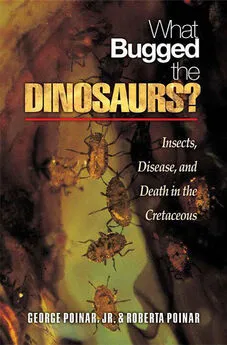

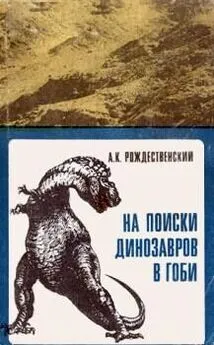
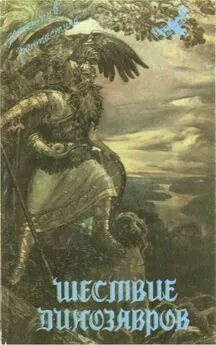
![Кейт Лаумер - Берег динозавров [Империум. Берег динозавров. Всемирный пройдоха]](/books/598305/kejt-laumer-bereg-dinozavrov-imperium-bereg-dino.webp)

